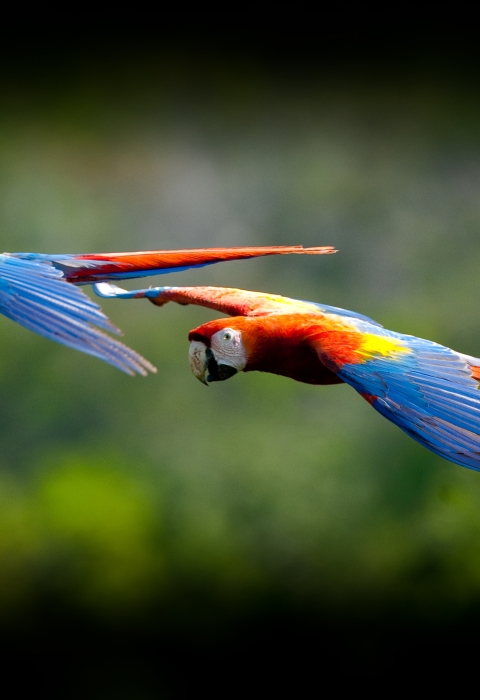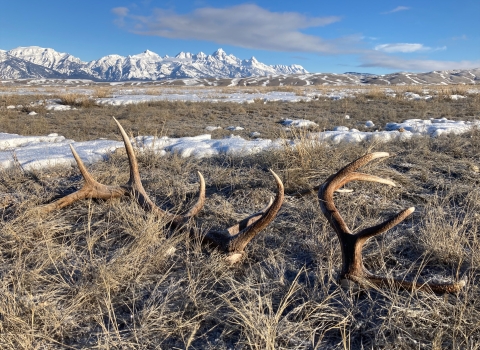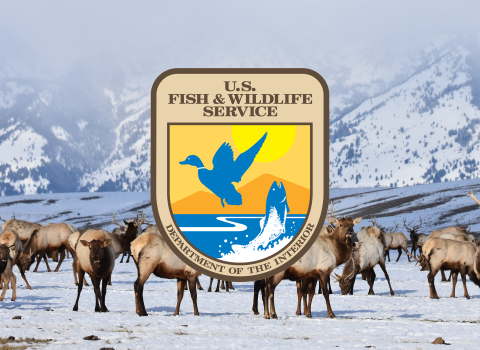U.S. Fish and Wildlife Service Releases Finding on Four Macaw Species
The U.S. Fish and Wildlife Service (Service) today announced its findings regarding a petition to protect four foreign macaw species — the great green macaw, hyacinth macaw, military macaw and scarlet macaw — as endangered under the Endangered Species Act (ESA). These species occur in Argentina, Belize, Bolivia, Brazil, Columbia, Costa Rica, Ecuador, El Salvador, French Guiana, Guatemala, Guyana, Honduras, Mexico, Nicaragua, Panama, Paraguay, Peru, Suriname and Venezuela.
The Service finds that listing the great green macaw, hyacinth macaw and military macaw as endangered is warranted, and is issuing proposed rules to list these three species. In addition, the Service finds that listing the scarlet macaw northern subspecies, and the northern distinct vertebrate population segment of the scarlet macaw southern subspecies as endangered is warranted, and is issuing a proposed rule to list this subspecies and distinct vertebrate population segment.
The Service carefully assessed the best available scientific and commercial information regarding the past, present and future threats faced by these four species. The four macaw species the agency is proposing to list as endangered face significant threats, particularly due to habitat loss and degradation and poaching. The Service has made this determination in response to a petition filed on January 2008, by Friends of Animals requesting the agency list 14 parrot species under the ESA. The Service completed an initial review in July 2009, and concluded the petition contained substantial information supporting a full study of 12 of the 14 species. On September 16, 2011, an extension to a settlement agreement was approved by the Court, in which the Service agreed to submit a determination for these four petitioned macaw species to the Federal Register by June 30, 2012. The Service has completed a comprehensive review – known as a 12-month finding – and determined that there is sufficient scientific and commercial data to propose listing the four foreign macaw species.
The proposed rules will publish in the Federal Register on July 6, 2012. The Federal Register publication of each rule is available online at http://www.fws.gov/policy/frsystem/default.cfm by clicking on the 2012 Proposed Rules under Endangered and Threatened Wildlife and Plants.
Written comments and information concerning each proposed listing and status review for these species can be submitted by one of the following methods to the appropriate Federal Register docket numbers:
Federal eRulemaking Portal: http://www.regulations.gov. Follow the instructions for submitting comments to the following docket numbers:
o great green and military macaws: Docket No. [FWS-R9-ES-2011-0101] o hyacinth macaw: Docket No. [FWS-R9-ES-2012-0013]
o scarlet macaws: Docket No. [FWS-R9-ES-2012-0039]
U.S. mail or hand-delivery: Public Comments Processing, Attn: [please use appropriate docket number for each species – see above]; Division of Policy and Directives Management; U.S. Fish and Wildlife Service; 4401 N. Fairfax Drive, MS 2042–PDM; Arlington, VA 22203.
The Service intends that any final action resulting from these proposed rules will be based on the best scientific and commercial data available and be as accurate and as effective as possible. The Service particularly seeks clarifying information concerning:
Taxonomy, distribution, habitat selection and trends (especially breeding and foraging habitats), diet, and population abundance and trends (especially current recruitment data) of these species.
The effects of habitat loss and changing land uses on the distribution and abundance of these species over the short and long term. The effects of other potential threat factors, including live capture and hunting, domestic and international trade, predation by other animals, and any diseases that are known to affect these species or their principal food sources over the short and long term.
Management programs for parrot conservation, including mitigation measures related to conservation programs, and any other private, nongovernmental, or governmental conservation programs that benefit these species.
The potential effects of climate change climate change
Climate change includes both global warming driven by human-induced emissions of greenhouse gases and the resulting large-scale shifts in weather patterns. Though there have been previous periods of climatic change, since the mid-20th century humans have had an unprecedented impact on Earth's climate system and caused change on a global scale.
Learn more about climate change on these species and their habitat.
Comments on each proposed rule must be received within 60 days, on or before September 4, 2012. The Service will post all comments on http://www.regulations.gov. This generally means the agency will post any personal information provided through the process. The Service is not able to accept email or faxes.
Addition of a foreign species to the Federal List of Endangered and Threatened Wildlife places restrictions on the importation of either the animal or its parts. Listing can also generate conservation benefits, such as increasing awareness of the species, prompting research efforts to address their conservation needs, or funding conservation in range countries.
The ESA provides a critical safety net for fish, wildlife and plants and to date has prevented the extinction of hundreds of imperiled species, as well as promoting the recovery of many others. The Service is actively engaged with conservation partners and the public in the search for improved and innovative ways to conserve and recover imperiled species. To learn more about the Endangered Species program’s Branch of Foreign Species, visit: http://www.fws.gov/endangered/what-we-do/international-activities.html.
Press Release
U.S. Fish and Wildlife Service Releases Finding on Four Macaw Species


